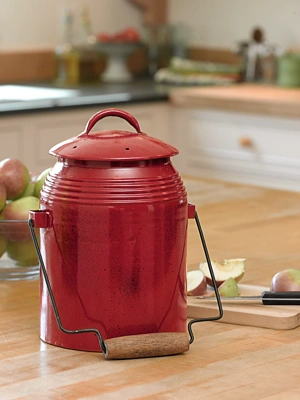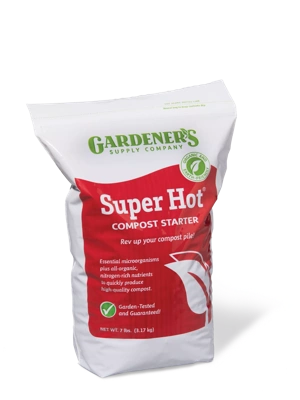Get "Rich" Quick with Batch Composting

Gardeners don't measure wealth in traditional terms. For us, the ultimate portfolio would definitely include a large dividend of dark and crumbly compost. If your idea of happiness and security includes a bottomless supply of compost, now is the time to implement your own get-rich-quick scheme.

Assuming you have access to a plentiful supply of raw compost materials (brown leaves, grass clippings, garden refuse, etc), the only thing you really need is a compost system that can quickly convert that organic waste into usable compost.
"Batch composting" does exactly that. Rather than adding material continuously to a pile that's already in the process of decomposing, you save up your raw materials in separate piles until you have enough for one big batch. The largest of your piles will ideally be brown materials, such as dry leaves. The smaller pile (about one-third the size) should be green, nitrogen-rich materials, such as rotted manure, grass clippings and garden refuse. For fastest results, all raw materials should be chopped or shredded before they go into the composter. Your lawn mower or a chipper/shredder makes this task easy.
When it's time to cook up a batch of compost, you place these materials — in alternating layers — into a bin of some kind and water them down. To ensure that your mixture has enough nitrogen and microbes, you can add a compost starter, such as Super Hot Compost Starter, as you are layering the ingredients. This two-part formula has an energizer (high nitrogen-enriched peanut meal) and activator (alfalfa, microorganisms, cocoa meal, and other ingredients). When mixed with your batch, the Super Hot helps jump-start the decomposition process.
Once the batch has been assembled, the aerobic action begins (for the pile and for you!). For quick decomposition, the beneficial bacteria inside the pile need lots of fresh oxygen. This means the pile needs to be turned every few days for four to six weeks until it has been gradually transformed into crumbly black compost.
If you have a strong back and plenty of time, you can do your batch composting in a large open bin of some kind, and turn the compost with a fork. But a Compost Tumbler makes the job of turning and aerating the compost far easier. You simply load the barrel with all of your ingredients and turn it five to 10 times every few days.
You can monitor the internal temperature at the center of your batch with a thermometer or by touch. Temperatures between 120 to 160 degrees F. indicate the beneficial organisms are multiplying rapidly and doing their job decomposing materials. Check the moisture content, too, to ensure the materials are not drying out. Squeeze a handful of compost to see if it feels like a damp sponge. If it does, the water level is fine. If it feels dry, add a little more water (be careful not to add too much) and then mix thoroughly.
As the microbes finish the decomposition process, the compost will begin to cool. Continue turning or rolling the composter every day or two.
Depending on the weather and the material you have used to compose your batch, the finished compost should be ready in five to eight weeks. There will be a blend of both fine and coarse material. You can sift the compost for use in potting mixes. Use the coarser compost as a nutritious top-dressing around outdoor plantings or till it directly into your garden. You may also use finished compost as a starter for your next batch.
Last updated: 07/17/2023
Print this Article:
Related items
Get the Dirt
Stay up to date on new articles and advice. Please fill out the information below.









